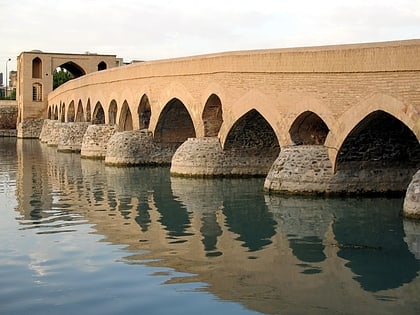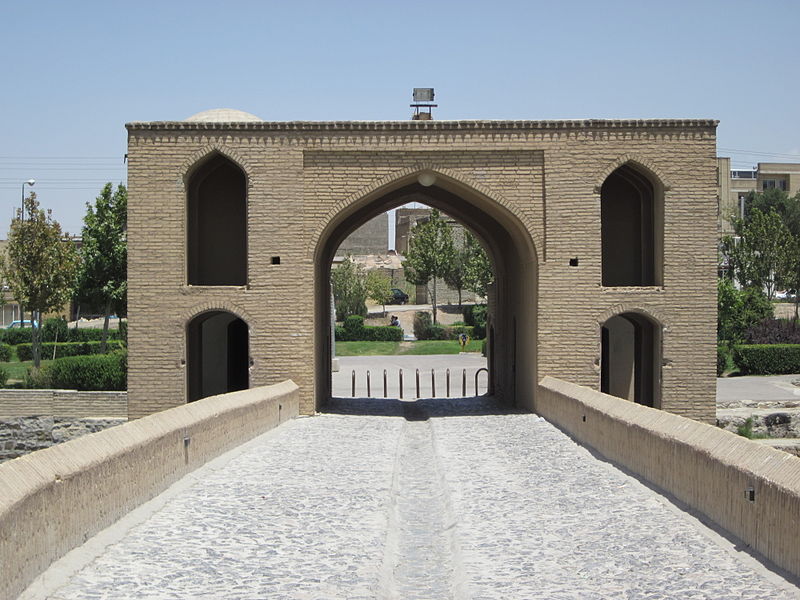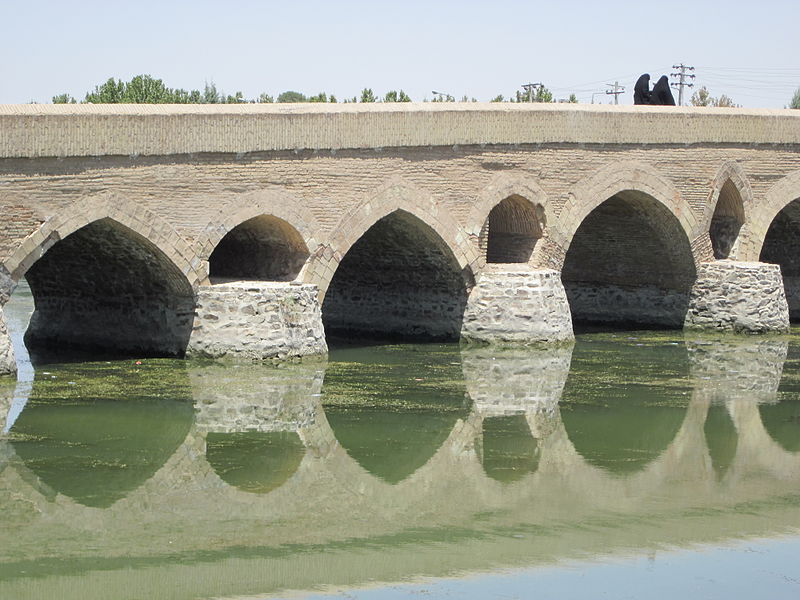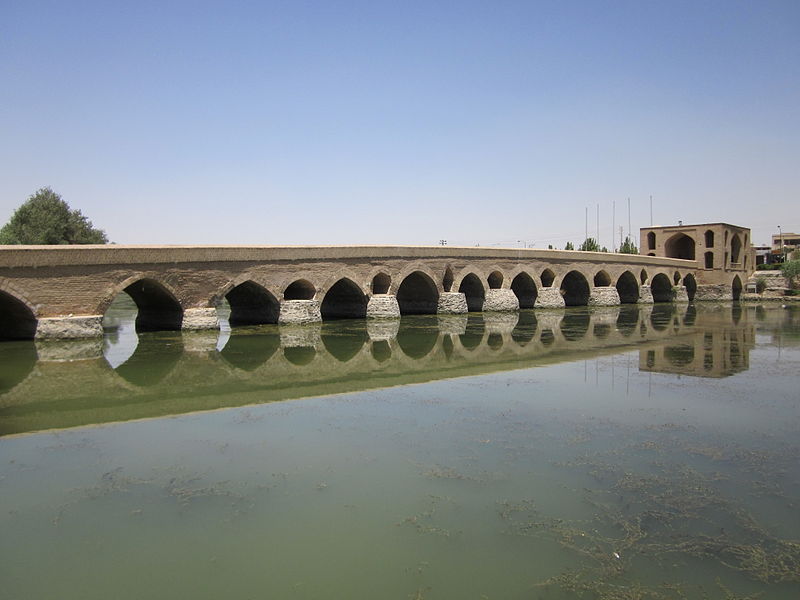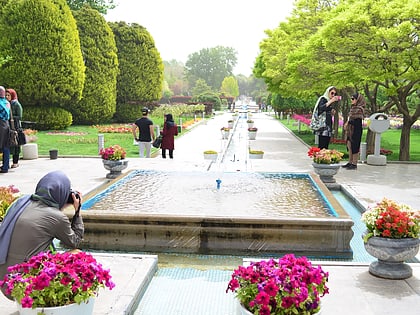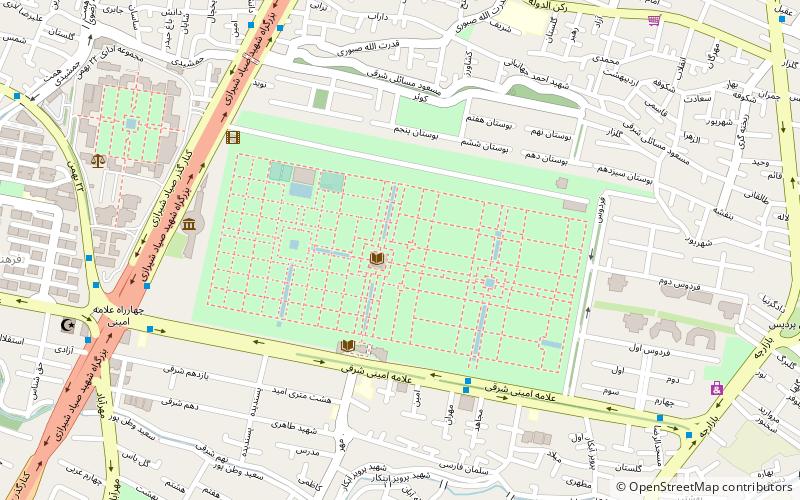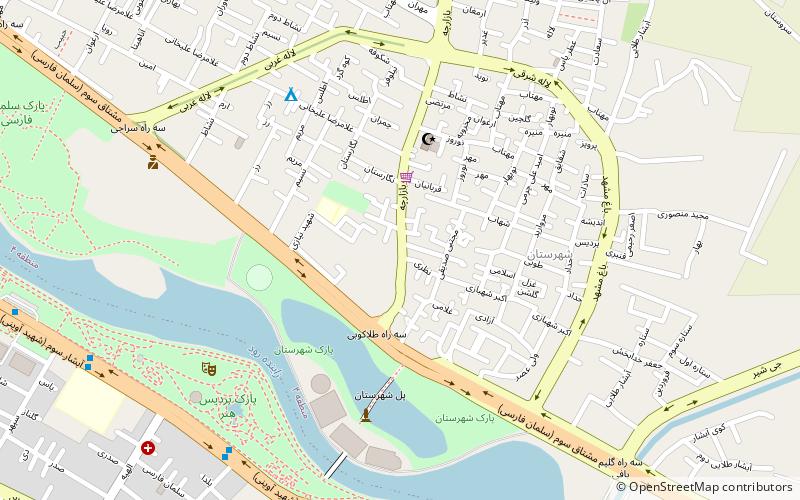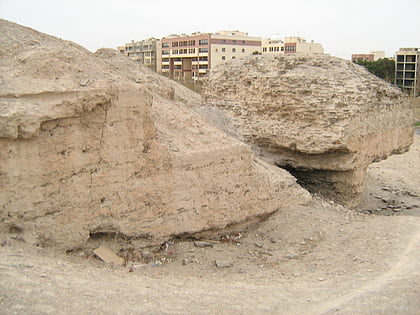Shahrestan Bridge, Isfahan
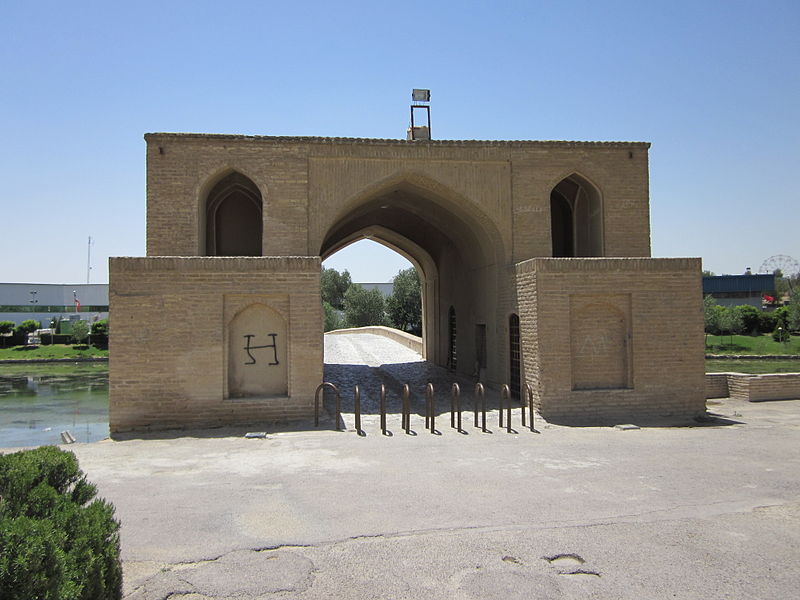
Facts and practical information
Spanning the waters of the Zayanderud River in Isfahan, Iran, the Shahrestan Bridge stands as a testament to the architectural prowess and historical significance of the region. Constructed in the 12th century during the Seljuk dynasty, this bridge is one of the oldest surviving bridges in Iran. It is an exemplary model of Persian architecture, predating many of the more famous bridges in the city, such as the Si-o-se-pol and Khaju bridges.
The Shahrestan Bridge, with its simple yet sturdy design, features a series of arches that have withstood the test of time. It stretches majestically across the river, connecting the banks with a length of approximately 105 meters. The bridge consists of 13 arch spans, with the largest central arch being the focal point. Its functionality has evolved over the centuries, from a means of transportation and water regulation to a gathering place for locals and a point of interest for tourists.
The bridge's robust brickwork and the harmonious integration with the surrounding landscape make it an iconic example of Iranian engineering. While not as ornate as its counterparts, the Shahrestan Bridge's simplicity speaks to a utilitarian purpose that has served the people of Isfahan for generations.
Open to pedestrians, the bridge offers a serene walkway where one can enjoy the gentle sounds of flowing water and take in views of the scenic riverbanks. Its historical ambiance transports visitors back in time, offering a glimpse into the rich cultural heritage of Isfahan.
2nd Moshtagh St.Isfahan
Shahrestan Bridge – popular in the area (distance from the attraction)
Nearby attractions include: Flower Garden of Isfahan, Ghadir Bridge, Al-Rashid Mausoleum, Sarouyeh.
Frequently Asked Questions (FAQ)
Which popular attractions are close to Shahrestan Bridge?
How to get to Shahrestan Bridge by public transport?
Bus
- پایانه آبشار • Lines: تندرو ۲ (5 min walk)
- Bus station (10 min walk)
